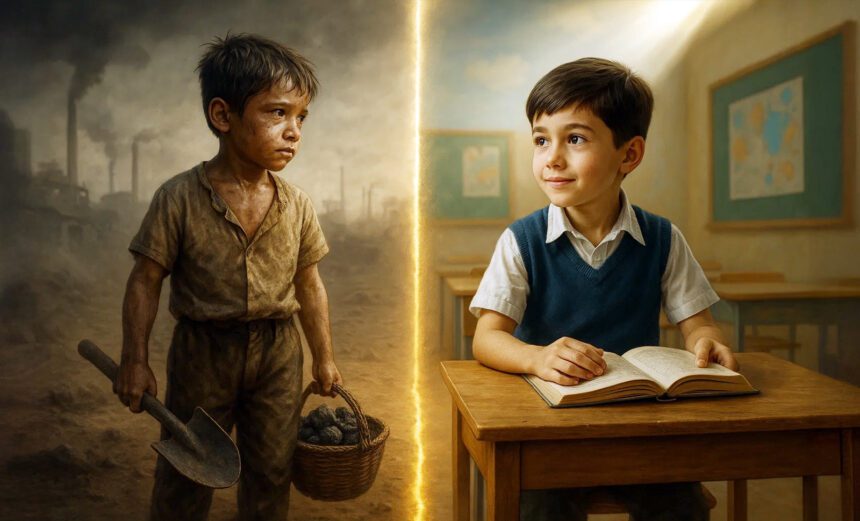In a world that prides itself on progress, innovation, and equality, millions of children continue to be denied their most fundamental right, the right to education. Child labor, though banned in most countries, remains a grim reality that traps young lives in cycles of poverty and exploitation. According to the International Labour Organization (ILO), as of 2023, an estimated 160 million children, roughly one in ten globally, are engaged in child labor. Nearly half of these children, about 79 million, toil in hazardous conditions that threaten their physical and mental health. Despite global commitments and decades of advocacy, the struggle to achieve universal education remains a distant dream for many.
The persistence of child labor is not confined to any single region. It cuts across continents and cultures, revealing deep structural inequalities and economic vulnerabilities. Sub-Saharan Africa remains the most affected region, with nearly 87 million children in labor representing 23% of its child population. South Asia follows with 32 million, and East Asia and the Pacific record about 24 million. Latin America and the Caribbean account for 11 million, while the Middle East and North Africa have about 6 million children engaged in labor. Most of these children work in agriculture, mining, domestic service, textiles, and informal sectors where regulation is weak or absent.
The reasons behind child labor are complex but interconnected. Poverty remains the root cause, driving families to depend on children’s income for survival. In regions where public education is underfunded or inaccessible, schooling becomes a luxury rather than a right. Conflicts, displacement, and economic instability further push children into the workforce. The COVID-19 pandemic exacerbated this crisis, as widespread school closures and job losses forced millions of children back into labor to support struggling households. In many low-income communities, the choice between learning and earning is not really a choice at all.
According to UNESCO, over 244 million children and youth remain out of school worldwide, the majority in low-income and conflict-affected countries. The link between education and child labor is direct and devastating. Children who work rarely attend school, and those who are out of school are far more likely to enter labor. This creates a vicious cycle, lack of education perpetuates poverty, and poverty sustains child labor. Girls, in particular, face additional barriers. Many are burdened with domestic responsibilities or forced into early marriages, denying them both education and childhood.
Global initiatives have long sought to combat this dual crisis. The Education for All movement, the United Nations’ Sustainable Development Goals (particularly SDG 4 on quality education and SDG 8.7 on ending child labor), and the ILO’s International Programme on the Elimination of Child Labour (IPEC) have made important progress. Countries like Brazil and the Philippines have achieved notable success through conditional cash transfer programs that reward families for keeping children in school. However, in conflict-ridden or economically fragile countries such as Afghanistan, Yemen, and parts of Sudan, the situation has deteriorated sharply. The global target to eliminate child labor by 2025 now appears increasingly out of reach.
The cost of inaction is enormous. Beyond the moral failure of denying millions their childhood, the economic consequences are severe. The World Bank estimates that each year of education lost to child labor can reduce lifetime earnings by 10 to 20 percent. Nations that allow widespread child labor lose potential human capital, productivity, and social stability. Conversely, investing in education brings remarkable returns. Every dollar invested in education can generate up to ten dollars in economic and social benefits, including better health, gender equality, and long-term development.
Experts agree that ending child labor and ensuring universal education require a coordinated global effort. Governments must strengthen education systems by making schooling free, inclusive, and accessible to all. Social protection programs should support vulnerable families to reduce their reliance on child income. Labor laws must be strictly enforced, with penalties for industries exploiting child workers. The private sector, too, has a crucial role to play in ensuring ethical supply chains and promoting fair trade practices.
Ultimately, the struggle for universal education is a struggle for justice, equality, and human dignity. As long as children are forced to trade books for tools and classrooms for factories, the world will remain short of its true potential. Education is more than a right; it is the foundation upon which nations are built and futures are shaped. A child in labor represents a future lost; a child in school represents a future regained.


















